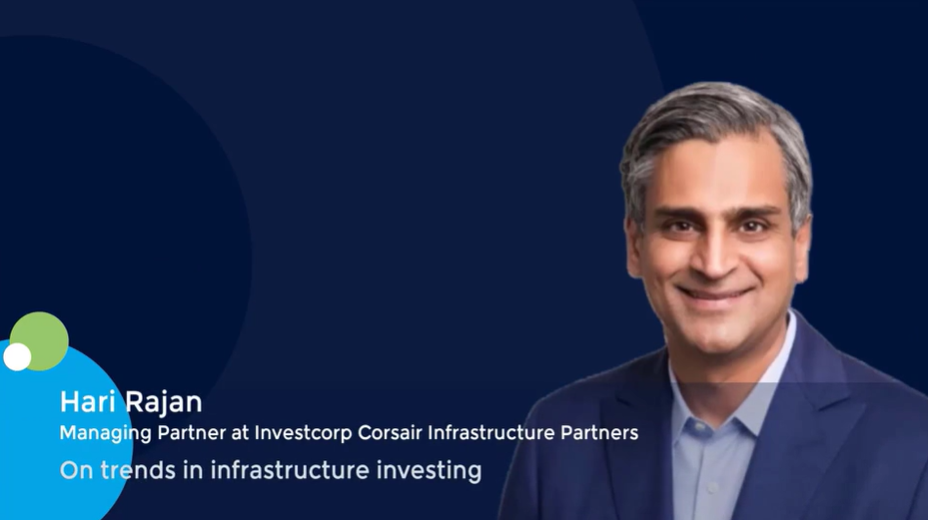Q&A: Warburg Pincus CEO Jeffrey Perlman on diversification, succession planning, Asia strategy
Warburg Pincus has USD 86bn in assets under management (AUM) and pursues a global growth investment strategy. The firm has been active in Asia for 30 years, deploying more than USD 30bn across China, India, and Southeast Asia. Jeffrey Perlman has spent much of his 18-year tenure with the firm in Asia. He opened the Singapore office in 2016, oversaw private equity activity in Southeast Asia, and built out the real estate business across the region. This is his first interview since becoming CEO in September.
Q: Succession planning is difficult in private equity. Now you are installed as the third generation of leadership in 60 years, what helped enable the transition?
A: There were three key elements that helped deliver a seamless transition. First, it was a well-thought-out process that started early and was communicated clearly over time – both internally and externally. Second, Chip [Kaye, now the firm’s Chairman] and his generation of leadership were selfless. Despite growing AUM by 10x during his tenure, that group of senior partners did not try to monetize the enterprise value that had been created. Their view is that, for institutions to succeed over the long term, ownership must be transient; it needs to reside with the people who are there every day sourcing deals, managing deals, and ultimately monetizing and exiting deals. That view is rare in our industry, and it’s been incredibly energizing for the firm. Third, the leadership transition reflects the rich history and culture of the firm, strategically aligned around our investor-first private partnership.
Q: Is it also significant that you and Chip were both relatively young when you became CEO, and you had both spent time in Asia?
A: That was partly foresight on the part of the founders – trying to enable continuity over a long period of time and avoid what could be more frequent messy transitions. Similar to Chip, I guess you can say I have a long runway as a part of the current generation of leadership. And then, to run a global business, you need a global gene and a global perspective. There’s no better way to get that than living and investing outside of your home market. Business building experience is also important. Asia is a challenging market – you need a local presence in different markets to be successful. Chip set up the business in Asia and then I developed some parts of it later on.
Q: Yet you’ve come into the role as an extended period of benign economic conditions is ending…
A: Chip likes to joke that, in his nearly 40 years with the firm, the first 25 years saw declining interest rates and the following 15 were characterised by very low rates. So, this big industry secular tailwind is starting to reverse, and rates are likely to stay higher for longer (though not so high by historical standards). It does invite questions from investors. When you look at how top-quartile private equity firms have manufactured returns over the past decade, 47% came from multiple expansion. In an elevated rate environment, two factors will become increasingly important: being earnings growth-focused and being diversified, and we’ve been that way on both fronts for nearly 60 years.
Q: Diversified how?
A: While it’s difficult to predict the future, one thing we can control is building a diversified portfolio across sector, geography and vintage. Over the past decade, any dollar not invested in the US and tech, on a relative basis, may have been viewed as a dollar not well spent. But that may not necessarily hold true in the decade to come, which is why a long-term diversified strategy is so important. Goldman Sachs recently projected that the S&P 500 will return just 3% annually over the coming 10 years. Meanwhile, we expect two-thirds of the global growth to come from Asia during this period. We’ve seen a growing lack of persistence across the industry, with big swings in performance from vintage to vintage for many GPs. This is partly because diversification had fallen out of vogue, but now investors are seeing the benefits of it again. Those who stay diversified like we have, can keep delivering consistent and persistent returns. We’ve been a net capital provider to our investors in nine out of the past 10 years, returning more capital than we have invested.
Q: How do geopolitics and global dislocation impact diversification efforts, especially in an Asia context?
A: We must all be cognizant of geopolitics. Our flagship fund, Global Growth XIV [which closed at USD 17.3bn in 2023], has meaningful exposure to Asia, but the composition of that exposure is different from the previous flagship funds, given some of the evolving variables, especially in China. If some of those variables are resolved in the coming years, that composition could shift again. In certain markets – India, for example – the macroeconomic environment and some of the political dynamics are working in their favour, so the flywheel for investment is very positive.
Q: How high is the bar for investing in China right now?
A: China remains a massive economy with vast entrepreneurial talent. Throughout our 30 years on the ground there, we have constantly adapted our investing approach to the market. Today is no different. While we will continue to invest in China, we have identified three key pillars that are critical to our success in the new paradigm. Any new investment must be aligned with the long-term domestic policies in China; we must believe that any exit is likely going to a domestic buyer in the event foreign buyers don’t re-emerge with scale; and we need an element of control or very meaningful governance, which enables us to exert influence during our hold period to allow for value creation and for our eventual exit. For example, one of our recent investments is in an affordable rental housing joint venture that has assembled a portfolio of about 30,000 apartments in Shanghai. It meets the bar in terms of aligning with China’s long-term policy, the exit is most likely to be domestic insurance companies, who like the sector and the yield, and we have control.
Q: How do you address the fact that so much capital remains tied up in China, notably minority investments in consumer internet assets?
A: To get investors interested and focused on China, you must deliver on the exit side. When I started our business in Southeast Asia, I used to say that you could keep a mediocre business funded in China given the depth of capital in the market, but in Southeast Asia, unless you were a market or sector leader, no one would look at you. Now, that seems to be true of China. There are a lot of country funds that are on Fund III but haven’t delivered 1x DPI out of Fund I. We have less exposure to consumer internet than many others, and we’ve sent back more money than we’ve invested in China on a historical basis. Of the USD 11bn we realized globally last year, USD 3bn came from Asia – USD 1bn from India, USD 1bn from Southeast Asia, and USD 1bn from China. We’ve been good at realizing when it is time to monetize an asset, in part because of our experience with Asia’s more compressed business cycles over time. You must take money off the table when you can, because exit windows can be shorter than in other markets.
Q: Would it be fair to say you are pivoting to developed Asia, what with the recent Japan office opening?
A: We find that investors want to play Asia in a more diversified way, and that has impacted how we construct our platform in the region. We’ve already done this in real estate, where the business is truly pan-Asian, and there are opportunities for private equity to expand beyond emerging Asia on the back of that. I thought it was important to centralize our leadership in Asia, so Vishal Mahadevia, who has run our India business for over a decade and co-leads financial services globally, is now running private equity for the region. In addition, we made an important hire with Tak Murata as our co-head of Asia real estate and head of Japan to open the Japan office and build out our team there. Tak is a unique talent in that he comes from both private equity and real estate background. I’ve also asked Andrew Park, a partner in our tech investing practice in New York, to relocate to Singapore to lead our Technology Investing in Asia. The tech opportunity in Asia is evolving from B2C consumer internet to something that resembles that in the US, with B2B enterprise software and SaaS. This trend was more evident in the mature markets – Japan and Australia – but now we see it in India and China as well. Andrew is one of three senior professionals we’ve sent from the US. While some of our peers have started to lean out of Asia, I want to cement our franchise there for the next 20 years.
Q: Warburg Pincus runs companion funds alongside the global flagship funds. How do you decide on companion strategies? For example, you’ve done energy. Would you now do energy transition?
A: The main purpose of each companion fund is to preserve the diversification of the main fund. Meanwhile, it generates meaningful alpha for investors by bringing exposure to the underrepresented or under-allocated regions or sectors. The financial services sector is a good example. While financial services make up 20% of the global economy, only 2% of the dollars raised in private equity over the last decade have been invested in this sector. It’s a less competitive area where our firm has built a strong track record. Energy transition is not currently an area that is creating a diversification issue for the main fund. Indeed, you could make a separate argument that a different risk-reward should be associated with those deals. Others have raised dedicated vehicles for energy transition on that basis.
Q: Earlier this year, Warburg Pincus closed its debut capital solutions fund on USD 4bn, exceeding the USD 2bn target. What is the strategy in terms of expanding into new verticals?
A: As a pioneer of global growth investing, we have created a sizable deal engine globally across our over 270 investment professionals, including 55 investing partners. Along with our best-in-class firm infrastructure, this has allowed us to organically extend into adjacencies, leveraging our expertise in managing different risk-return profiles and deepening our partnerships with our investors. From a strategy perspective, any adjacency must leverage the deal engine, be scalable, reflect the risk-return profile our investors are looking for, and the economics should be accretive to our partnership. It’s also worth noting that one of the benefits of being a private partnership is that we have full control over our own strategy; there is no pressure to expand into new verticals and products just for the sake of AUM growth. We believe our inaugural capital solutions fund was met with strong support from investors – despite a challenging fundraising environment – because of our differentiated approach. Our capital solutions team collaborates with domain experts across our core sectors and geographies to extend our prospecting efforts and assist with structuring.
Q: Does that mean you would be philosophically opposed to going public?
A: If I ever felt we would be at a competitive disadvantage by not being public, I, like any leader, would have to revisit that. But I believe the opposite is true today. For nearly 60 years, we have been one of the few truly integrated global private partnerships with an investor-first model. Our firm, our investors and our portfolio management team form a perfectly aligned triangle. When our portfolio companies do well, our LPs do well, and we do well in the process. One of the challenges of being listed is that it introduces a fourth party into the triangle, and that fourth party is looking for AUM growth and an ever-higher share price. It will be interesting to see how this dynamic plays out across the industry. The notion of separate carry for the team and fees for the few who own the management company does seem like it will create alignment issues over the longer term. We feel strongly about the model we have and the success it has brought us.
Q: The industry is also consolidating, in part because large – often listed – managers engage in M&A. How might you fit into this?
A: Our single biggest asset is the human capital that helps to deliver such a robust and compelling deal engine for the firm. The adjacencies we are focused on also leverage that great deal engine. While there might be interesting opportunities that could enhance our overall platform and lead us to look at something inorganically, we continue to remain pretty focused on our core pillars of strength and our investor-first model.
Jeffrey Perlman will be doing a keynote interview at the AVCJ Private Equity Forum 2024 on November 19. For more information, go to https://community.ionanalytics.com/avcj-private-equity-forum-hongkong-2024












